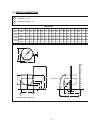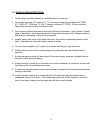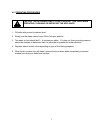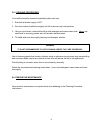
5
2.0 INTRODUCTION
DESCRIPTION
All direct connected steam jacketed kettles pertaining to this manual are direct steam operated
pressure vessels of a double-wall stainless steel construction forming a steam chamber (jacket)
enveloping the lower two thirds of the kettle bowl surface. All kettles are tilting and counter top
mounted in fixed positions on legs.
CAPACITIES
All models are suffixed with either -6, -10, 12 or -20 to indicated the capacity of that kettle in US
gallons.
FUNCTIONING MODE
Direct connected steam jacketed kettles consist of a stainless steel bowl and a stainless steel
jacket which envelopes two thirds of the lower surface of the bowl thus forming a sealed
pressure vessel (chamber) into which steam is introduced by means of a manual control valve.
The kettle bowl is the container for the food product which ideally should be of a liquid or semi-
liquid consistency to achieve complete contact with the bowl surface and thus fully absorb the
heat transmitted through that surface.
The temperatures required for the cooking process to function adequately must be greater than
the boiling point of the liquid food product, viz. water. Further, the greater the steam pressure
used, the higher the temperature and consequently the quicker the cooking process. For
example, steam pressurized at 30 p.s.i. attains a temperature of 274 degrees Fahrenheit (135
degrees Celsius).
In the initial stages of the cooking process when the steam comes in contact with the cold kettle
bowl surface it condenses and forms considerable amounts of water. A thermostatic steam trap
should be plumbed to the exit end of the kettle jacket. This trap is a mechanical device that
closes on high temperatures and opens when the temperature drops thus allowing the water
formed from condensate to exhaust but retain steam under pressure.










